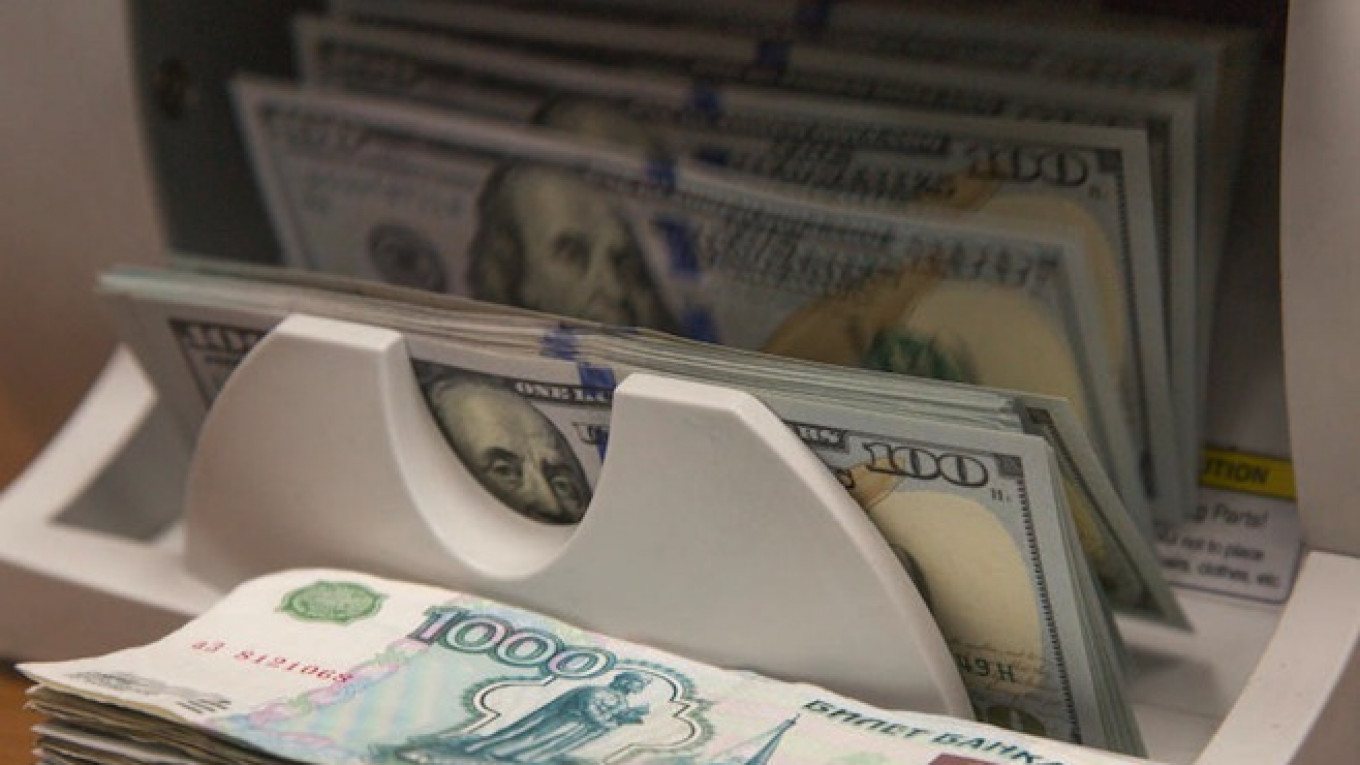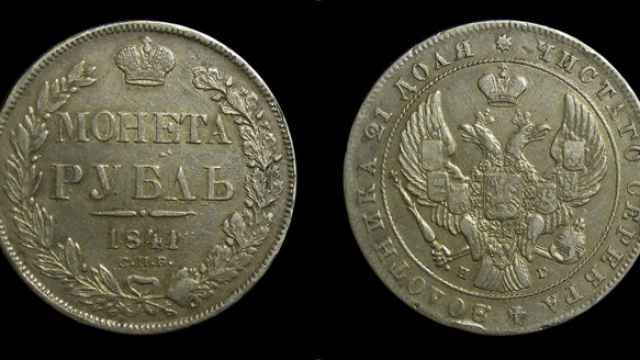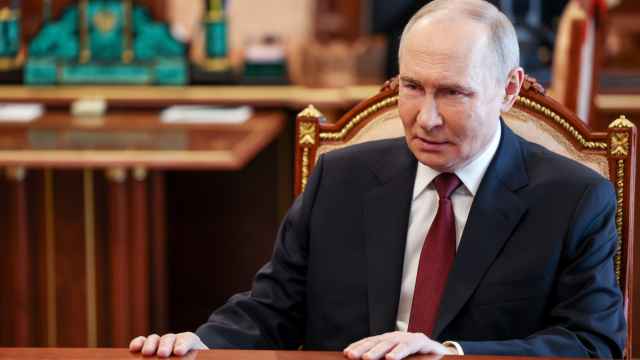The ruble collapsed by 10 percent against the U.S. dollar Monday earning the Russian currency the dubious laurels of the world’s worst-performing currency this year.
The Russian currency has now fallen 49.3 percent against the greenback since January, according to data from the Moscow Exchange. The drop takes it below the Ukrainian hryvna, which has weakened 47.9 percent in 2014.
Monday’s plunge was the largest single-day fall for the ruble since the financial crisis of 1998 when Russia was forced to default on its debt after exhausting its reserves in a fruitless bid to prop up the currency.
In evening trading Monday the ruble was worth 64.4 against the dollar and 78.8 versus the euro. The currency earlier dropped past 100 rubles to the British pound.
Russian stocks followed the ruble downward with analysts at Bank of America Merrill Lynch labeling the 10 percent decline for some shares “local capitulation.”
The dollar-denominated RTS Index, particularly vulnerable to ruble weakness, fell 10.12 percent Monday to 718.32 points, its largest drop since March when Russia moved to annex Ukraine’s southern Crimean Peninsula.
The ruble’s depreciation has gathered pace in recent days with the currency shedding 15 percent versus the dollar in the last three days of trading alone.
The ruble has been under heightened pressure from falling oil prices — with Brent crude now trading at almost $60 a barrel down from a June high of $115 — but appeared Monday to decouple from its traditional link to the oil price. Oil initially strengthened Monday, before reversing gains after stock markets closed in Moscow.
“The ruble today became detached from oil fundamentals,” Tom Levinson, currency strategist at Sberbank CIB in Moscow, said in written comments.
“The problem is that there is no obvious 'end game' for investors to grab hold of when it comes to a possible turnaround. Markets are pushing at an open door,” he said.
The Ghanian cedi and the Argentinian peso occupy the places above the hryvna and the ruble at the bottom of the table of this year's worst-performing currencies. The hryvna has been battered by a full-blown recession in Ukraine exacerbated by a war in the east of the country and the introduction of capital controls.
Monday's moves by the ruble were “staggering,” said Timothy Ash, an emerging markets analyst at Standard Bank, in a note to investors.
Currency traders said that the Central Bank intervened on the market to support the ruble Monday afternoon, according to the Reuters news agency. In line with the regulator's approach since letting the ruble free-float on Nov.10 however, the interventions were relatively small — apparently designed to slow the currency's fall rather defend a certain level.
"The policy response from the Russian authorities has been close to non-existent," according to analyst Ash. “This is a really high-risk strategy from the Central Bank.”
Experts earlier warned that the Central Bank could stage a large intervention on the market to punish traders betting on the ruble's continued decline, but such expectations appear to be fading.
There is an increasing conviction that “ruble bears will not be subject to any sudden bounce back,” said strategist Levinson.
While Russia has spent over $70 billion defending the ruble this year, it still has $420 of its foreign currency reserves left, according to Central Bank data.
Additional downward pressure on the ruble was generated by fears of an increase in tensions between Moscow and the West after the passage through the U.S. House of Congress at the weekend of a new bill that could harden sanctions against Russia over the Ukraine crisis if signed into law by President Barack Obama.
The Ukraine Freedom Support Act would “be negative for market sentiment,” analysts at Sberbank CIB said in a note Monday.
The speed and extent of the ruble's disintegration in recent days has also raised fears that the Russian government could resort to more extreme measures, including restrictions on the free flow of capital, in order to restore stability to the market.
“There is a growing sense that the currency crisis is spiraling out of control,” London-based macroeconomic research company Capital Economics said in an emailed report Monday.
“Hard-liners inside the Kremlin are most likely to be making the case for capital controls.”
Contact the author at h.amos@imedia.ru
A Message from The Moscow Times:
Dear readers,
We are facing unprecedented challenges. Russia's Prosecutor General's Office has designated The Moscow Times as an "undesirable" organization, criminalizing our work and putting our staff at risk of prosecution. This follows our earlier unjust labeling as a "foreign agent."
These actions are direct attempts to silence independent journalism in Russia. The authorities claim our work "discredits the decisions of the Russian leadership." We see things differently: we strive to provide accurate, unbiased reporting on Russia.
We, the journalists of The Moscow Times, refuse to be silenced. But to continue our work, we need your help.
Your support, no matter how small, makes a world of difference. If you can, please support us monthly starting from just $2. It's quick to set up, and every contribution makes a significant impact.
By supporting The Moscow Times, you're defending open, independent journalism in the face of repression. Thank you for standing with us.
Remind me later.







